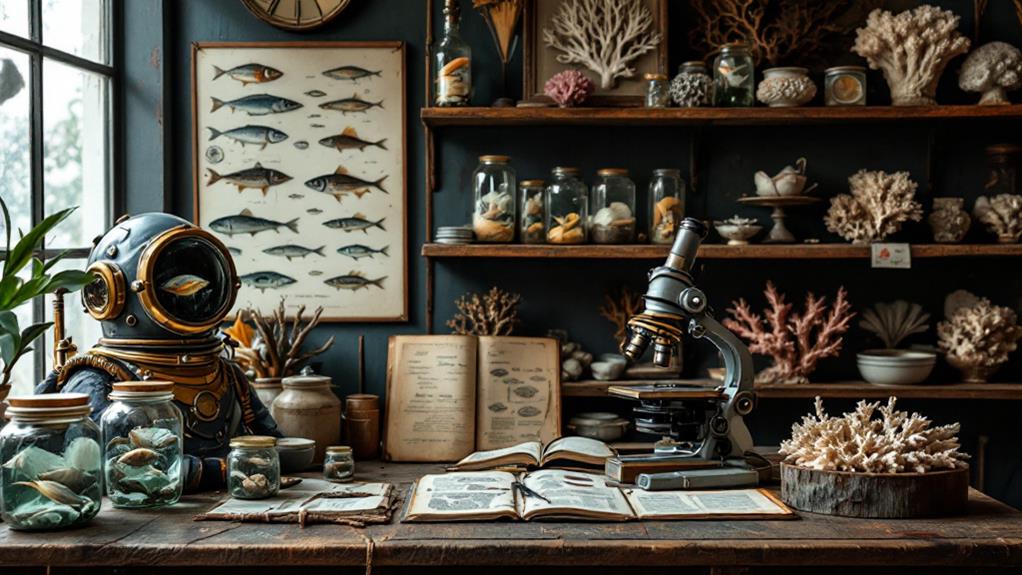The Science Behind Tattoos: How Ink Becomes Art on Skin
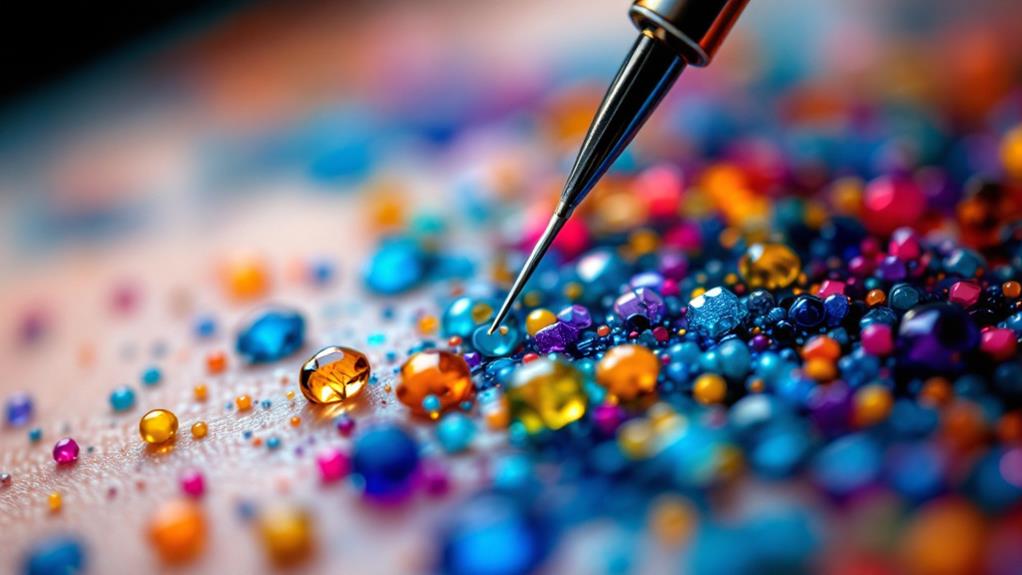
Tattoos become art on your skin through a dynamic interplay of chemistry and biology. When getting inked, a tattoo artist uses a needle to deposit ink into the dermis, the skin's middle layer, where it remains permanently embedded. This is possible because the ink's carriers and binders stabilize it, while the skin's healing response encapsulates the pigment. Your immune system recognizes ink particles as foreign, but they're too large to completely remove, allowing the tattoo's colors to endure. Skilled artists manage needle depth and ink composition to achieve lively and lasting designs. Investigate how science transforms tattoos into enduring art.
The History of Tattooing
Tattooing has a rich and varied history that spans across cultures and centuries. As you explore this fascinating world, you'll uncover that tattoos have been more than just body art; they've held deep cultural significance for many societies. Ancient techniques, some dating back thousands of years, reveal how different cultures viewed tattooing as a powerful expression of identity, spirituality, and status.
In Polynesian cultures, for example, tattoos were seen as a rite of passage, marking significant life events or achievements. The elaborate designs were applied using ancient techniques like tapping tools, which required skill and accuracy. In ancient Egypt, tattoos were believed to provide protection in the afterlife, and many mummies have been found adorned with sacred symbols. Likewise, in Japan, traditional Irezumi tattoos represented courage and strength, created with careful hand-poked methods.
Skin Anatomy and Tattooing
Understanding how tattoos interact with your skin's anatomy is vital for appreciating the artistry and permanence of the ink. Your skin is composed of three main layers: the epidermis, dermis, and hypodermis. When you get a tattoo, the ink is deposited into the dermis, the middle layer. This is significant because the dermis is more stable than the epidermis, which constantly sheds and regenerates. By ensuring the ink settles in the dermis, the tattoo becomes permanent.
During the tattoo process, a needle punctures your skin, creating a wound that begins the tattoo healing process. Initially, your body responds by sending immune cells to the area to begin repairing the damage. As your skin heals, the outermost layer or epidermis forms a protective barrier over the ink. This healing phase is vital and requires proper care, as neglect can lead to issues like infection or fading.
Understanding these skin layers and the tattoo healing process highlights the intricate balance between art and biology. With the right care, your tattoo can remain lively and enduring, a reflection of the skilled interaction between ink and skin.
Tattoo Ink Composition
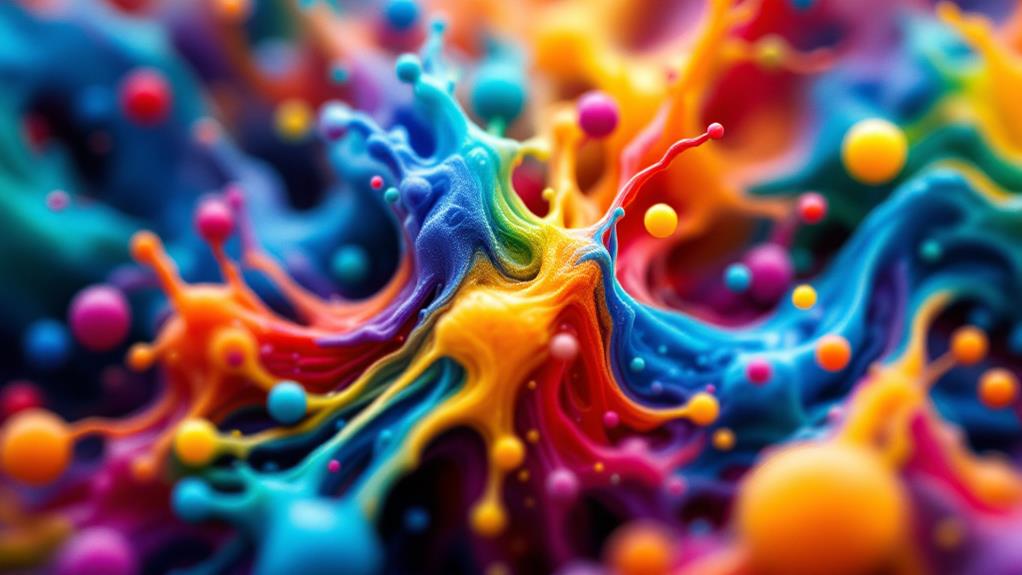
When considering what goes into your tattoo, it's essential to understand the composition of tattoo ink. Tattoo ink isn't just a simple liquid; it's a blend of diverse ink ingredients that determine not only the color but also the longevity and safety of your body art. The primary components include pigments, which provide the color, and carriers, which help the ink flow smoothly and evenly. Knowing about these elements can help you make informed decisions and guarantee your tattoo remains lively over time.
Significant Ink Ingredients:
- Pigments: These are the core of any tattoo ink, providing the color that becomes your art. They can be organic or inorganic, each offering different shades and levels of brightness.
- Carriers: Liquids like water or alcohol that transport the pigment into your skin. They assure even distribution and color stability.
- Binders: These help pigments adhere to the skin, influencing how the tattoo will mature.
- Preservatives: Added to prevent contamination and extend the shelf life of the ink.
- Additives: These improve certain properties, like brightness or consistency.
Understanding these ingredients is key to achieving the desired color stability and longevity of your tattoo.
The Tattooing Process
With a grasp of what makes up tattoo ink, you're ready to investigate how these ingredients come to life on your skin. The tattooing process is an intricate blend of artistry and technique. It begins with a skilled artist using a tattoo machine, which rapidly inserts ink into your skin with a needle. This machine operates at high speed, allowing for precise lines and shading, vital for diverse artistic styles. Depending on the style you're after—be it realism, traditional, or watercolor—the artist adjusts their tattoo techniques to suit your design.
During the process, you'll notice the artist frequently wiping away excess ink and blood. This guarantees a clear view of their work and maintains a clean canvas. They might switch needles to achieve different effects, such as fine lines or bold shading. Each technique is chosen to improve the comprehensive design, making your tattoo a true work of art.
Communication with your artist is fundamental. Discuss your vision, preferred artistic styles, and any concerns you may have. This collaboration guarantees that the tattooing process results in a piece that exceeds your expectations, transforming ink into a lasting masterpiece on your skin.
Ink Placement and Retention
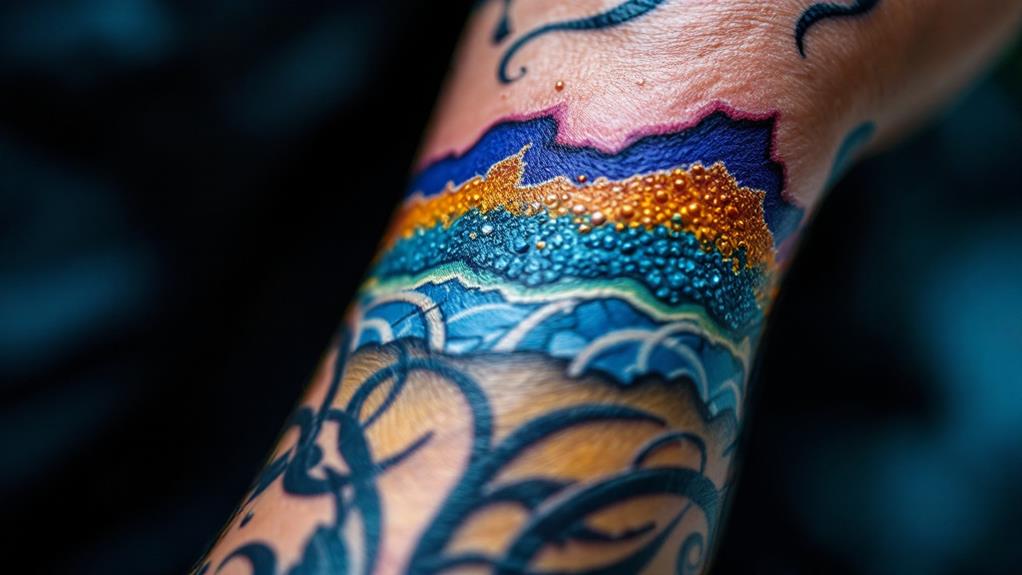
Proper ink placement and retention are crucial for ensuring your tattoo lasts a lifetime with lively colors and sharp details. When a tattoo artist works on your skin, they need to place the ink in the dermis, the layer below the epidermis, to prevent premature fading. If ink seeps into the wrong layer, you might notice ink migration, where the lines blur or spread. This happens when the ink goes too deep or too shallow, affecting the design's crispness.
To achieve the best results, consider these factors:
- Needle Depth: Make sure the artist uses the correct needle depth for proper ink placement.
- Skin Preparation: Clean and prepare the skin properly to aid pigment stability.
- Tattoo Aftercare: Follow aftercare instructions to prevent ink from fading or migrating.
- Choose Experienced Artists: Experienced artists know how to control needle depth and pressure.
- Ink Quality: High-quality inks have better pigment stability and longevity.
Immune System Interaction
Although getting a tattoo involves art and creativity, your immune system plays a significant role in how your body handles the ink. When you get a tattoo, the needle punctures your skin, depositing ink into the dermis layer. This process triggers your body's immune response as it perceives the ink particles as foreign invaders. Immediately, white blood cells rush to the site, attempting to engulf and remove these particles. However, the ink particles are too large for them to break down completely, allowing the tattoo to remain visible.
Your immune system's constant vigilance is key to maintaining your tattoo's appearance. Over time, the white blood cells continue to try removing the ink, which is why tattoos can fade gradually. It's also vital to be aware of tattoo allergies. Some individuals may experience allergic reactions to certain ink pigments, resulting in redness, itching, or even more severe symptoms. This occurs because your immune system becomes overly active, reacting aggressively to specific components in the ink.
Understanding your immune response and potential tattoo allergies can help you make informed decisions about your tattoo experience, ensuring both beauty and health are prioritized.
Factors Affecting Tattoo Longevity
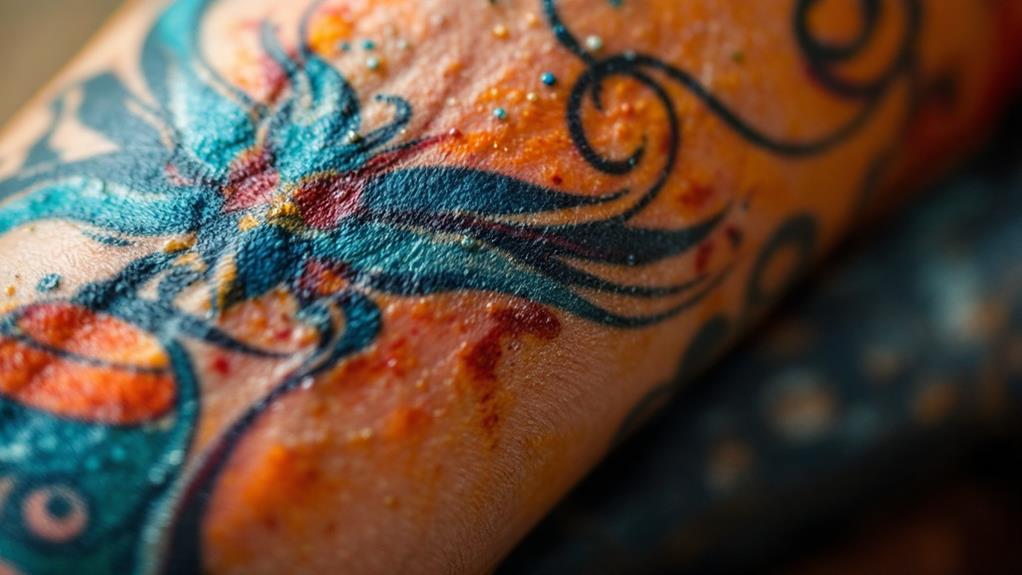
Several factors can influence how long your tattoo stays vivid and sharp. It's vital to understand how both personal habits and environmental influences play a role in tattoo longevity. By following certain tattoo maintenance tips, you can guarantee your ink remains a beautiful piece of art for years to come.
First and foremost, the sun is a tattoo's biggest enemy. Ultraviolet (UV) rays can cause fading and blurring over time. Always apply a high-SPF sunscreen when your tattoo is exposed to sunlight. Furthermore, keeping your skin moisturized is fundamental. Dry skin can lead to flakiness, which may affect the tattoo's appearance.
Here's a list of factors affecting tattoo longevity:
- Sun Exposure: Regular use of sunscreen helps prevent fading.
- Skin Care: Keeping skin hydrated maintains the tattoo's vibrancy.
- Placement: Areas with more friction, like feet or hands, may experience quicker fading.
- Ink Quality: Higher-quality inks tend to last longer and maintain their color.
- Aging: Natural aging will cause some degree of fading and distortion.
Innovations in Tattoo Science
In recent years, numerous innovations in tattoo science have transformed the industry, offering both artists and enthusiasts exciting new possibilities. One of the most groundbreaking advancements is the integration of 3D printing and digital design. These technologies allow you to visualize complex tattoo designs before they're inked onto your skin, ensuring precision and satisfaction. Artists can experiment with intricate patterns and realistic textures, elevating your tattoo experience.
Color theory has also seen significant advancements, enabling artists to mix and match pigments with greater accuracy, resulting in lively and lasting colors. Biocompatible inks are another exciting development, minimizing allergic reactions and health concerns while adhering to stricter health regulations. These inks offer safer options, ensuring that your skin remains healthy.
Laser technology plays an essential role in both the application and removal of tattoos. With improved precision, lasers can help refine artist techniques or remove unwanted tattoos more effectively, reducing pain and healing time. Temporary tattoos have also become more realistic and durable, offering you the flexibility to experiment with designs without long-term commitment. With these innovations, the world of tattoos continues to evolve, making your ink adventure more creative and safe.
